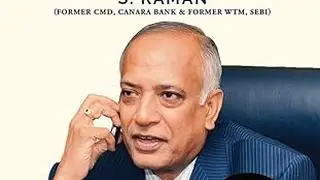At a pan-IIT conference held in IIT Madras, Prof Venkatesh Balasubramanian of the Engineering Design department, accosted me with a question: Before you spend money on an ad how do you know it will evoke the desired response?
This conversation happened more than a decade ago. I explained to Prof Venkatesh that most clients have well laid down protocols called ‘Ad Pre-Tests’ and usually ads go through many rounds of ‘testing’ before they are aired. I also mentioned that the most important factor would probably be the creative judgement that a client and an agency use while clearing an ad for production and release.
Neuroscience in marketing
Prof Venkatesh’s question and the discussion that ensued got me to dig deeper into the application of neuroscience in marketing and this search led me to books by AK Pradeep (Buying Brain) and Martin Lindstrom (Buyology). I learnt that some of the earliest research involved Coke and Pepsi. When tested in a blind form, Pepsi scored on taste, but when tested with the brand name mentioned Coke prevailed. Why? When respondents were hooked on to an EEG (electro encephalograph) machine, it was clear that the brand name Coke triggered a great many more neurons in the brain. And this resulted in the respondent rating Coke higher. The power of branding on the brain!
So, it was with much expectation I started reading Prof Arvind Sahay’s new book Brands & The Brain – How to use neuroscience to create impactful brands. Prof Sahay is a highly respected professor of marketing at IIM Ahmedabad and this book is indeed a great exposition on the way the use of neuroscience has grown in the field of marketing. What I found very interesting are the Brain Operating Principles he explains lucidly in the book. BOP 1 says that the brain wants to feel good, avoid pain, feel secure, get rewards and so on. BOP 2 says the brain is the most energy-intensive organ in the body and is always looking to conserve energy by resorting to short cuts (brands help). BOP 3 says that the brain is designed to look for patterns, groups and categories (brands are ways of fitting into a pattern to create meaning). BOP 4 the brain remembers and engages with contrasts / differences / peak shifts from existing patterns (contrasts attract attention). BOP 5 says that the brain is designed to mirror and confirm socially to others.
Prof Sahay says that ‘a powerful brand, therefore, provides increases in relevant neurotransmitters more than competition, reduces energy consumption of the brain, fits into a pattern and provides contrast at the same time, commands high mirroring among people and is deeply embedded in the unconscious memory of the consumer’.
Brain operating principles
The book is full of information about the various parts of the brain and how they are aligned to the various Brain Operating Principles. Some of that may be beyond the grasp of a lay reader, like this reviewer. But, to someone one who is interested in digging deeper into the subject, there is a lot of information to ponder over. The book covers topics such as ‘How we decide about brands’, ‘Why brands matter and the nature of a brand in the brain’, ‘Diagnosing your brand and steps to building it’, ‘Sustaining and rejuvenating a brand’. While there are numerous books on these subjects, in this book the lens is that of neuroscience.
What was of great interest to this reviewer was also the listing of various neuromarketing tools and measurement services on offer for brand management, both in India and abroad.
If there is a lacuna in the book it is the absence of real-life Indian cases on the use of neuroscience; for instance, I was looking for Indian examples of neuroscience application in logo design, packaging change, advertising creative selection and so on. While there are several international examples referred to in the book (Coke, Mars, Procter & Gamble), this reviewer missed reading about Indian cases where neuroscience has been applied in brand marketing. It will be great if Prof Sahay follows up this excellent book with a book dedicated to Indian cases on the application of neuroscience in brand management. But for now, this book is a must read for those involved in brand management and looking at improving the way their brands are connecting with consumers.
(Ambi Parameswaran is a bestselling author, advertising/branding veteran and an independent brand coach)









Comments
Comments have to be in English, and in full sentences. They cannot be abusive or personal. Please abide by our community guidelines for posting your comments.
We have migrated to a new commenting platform. If you are already a registered user of TheHindu Businessline and logged in, you may continue to engage with our articles. If you do not have an account please register and login to post comments. Users can access their older comments by logging into their accounts on Vuukle.